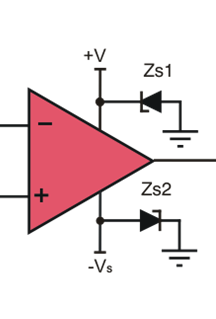Other Parts Discussed in Thread: TLE2141, TPS60400
Hello,
Our customer use the TLE2142, have a latch-up issue.
The customer use the TLE2142 with dual supply voltage. There is an unused circuit, the customer make a
voltage follower circuit with +input connect GND.
They shut down the negative supply voltage before the positive supply voltage power down.
Then it occur latch-up. The rush current flow through the VCC+ to +input of the unused circuit.
I thought a latch-up model. Is my understanding correct?
The customer will add a resistor between +input and GND.
Is it a workaround for latch-up?
Best Regards,
Naoki Aoyama


